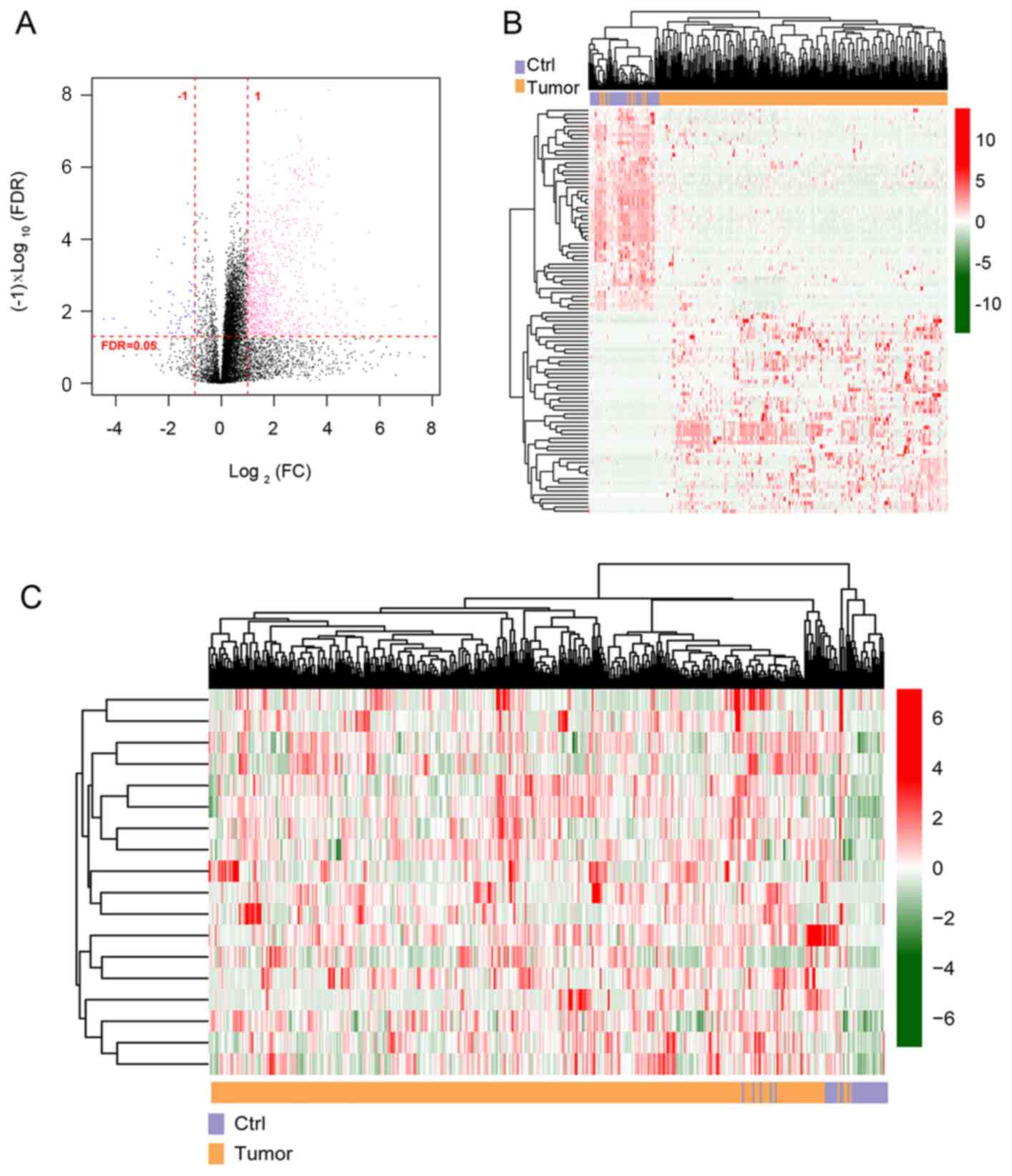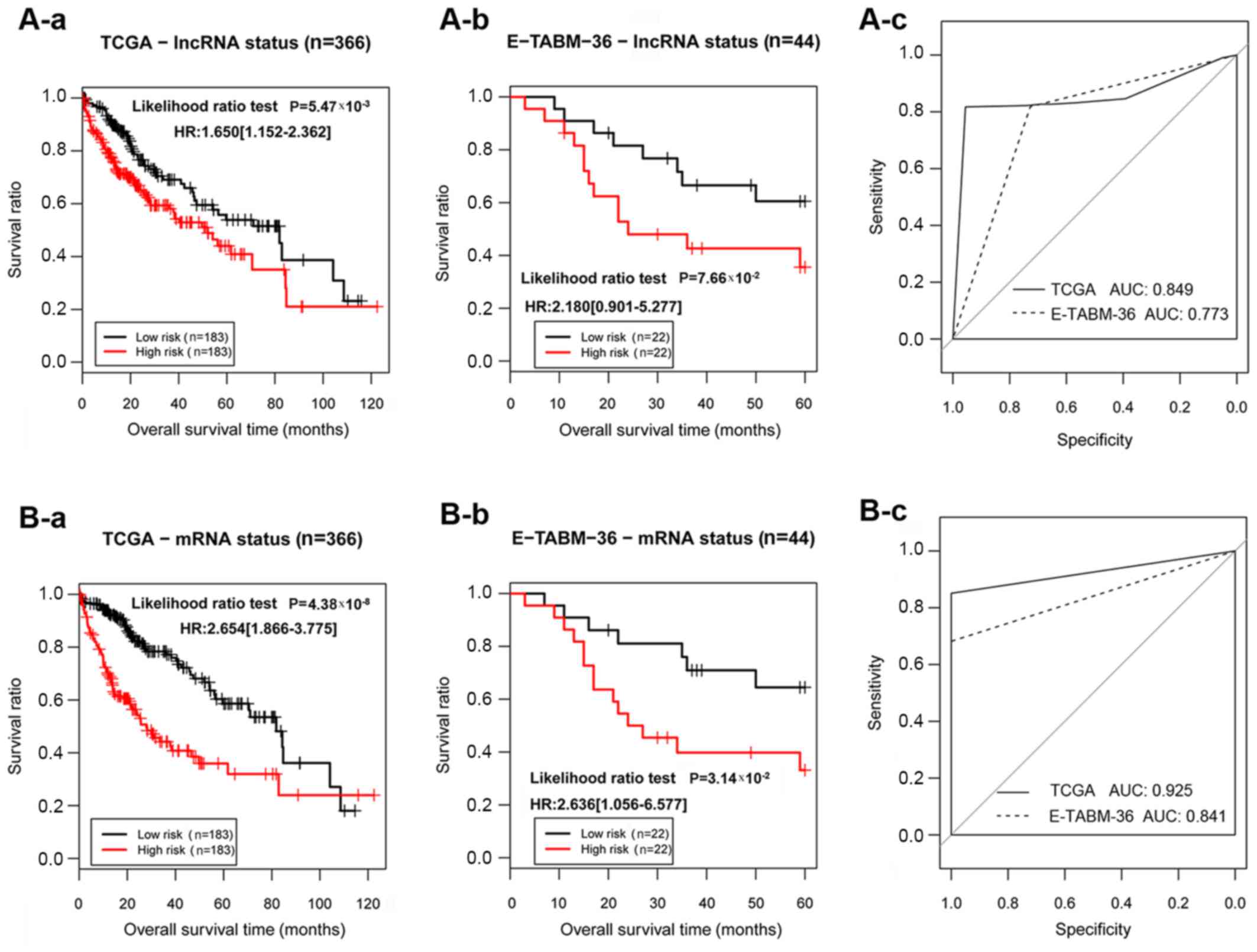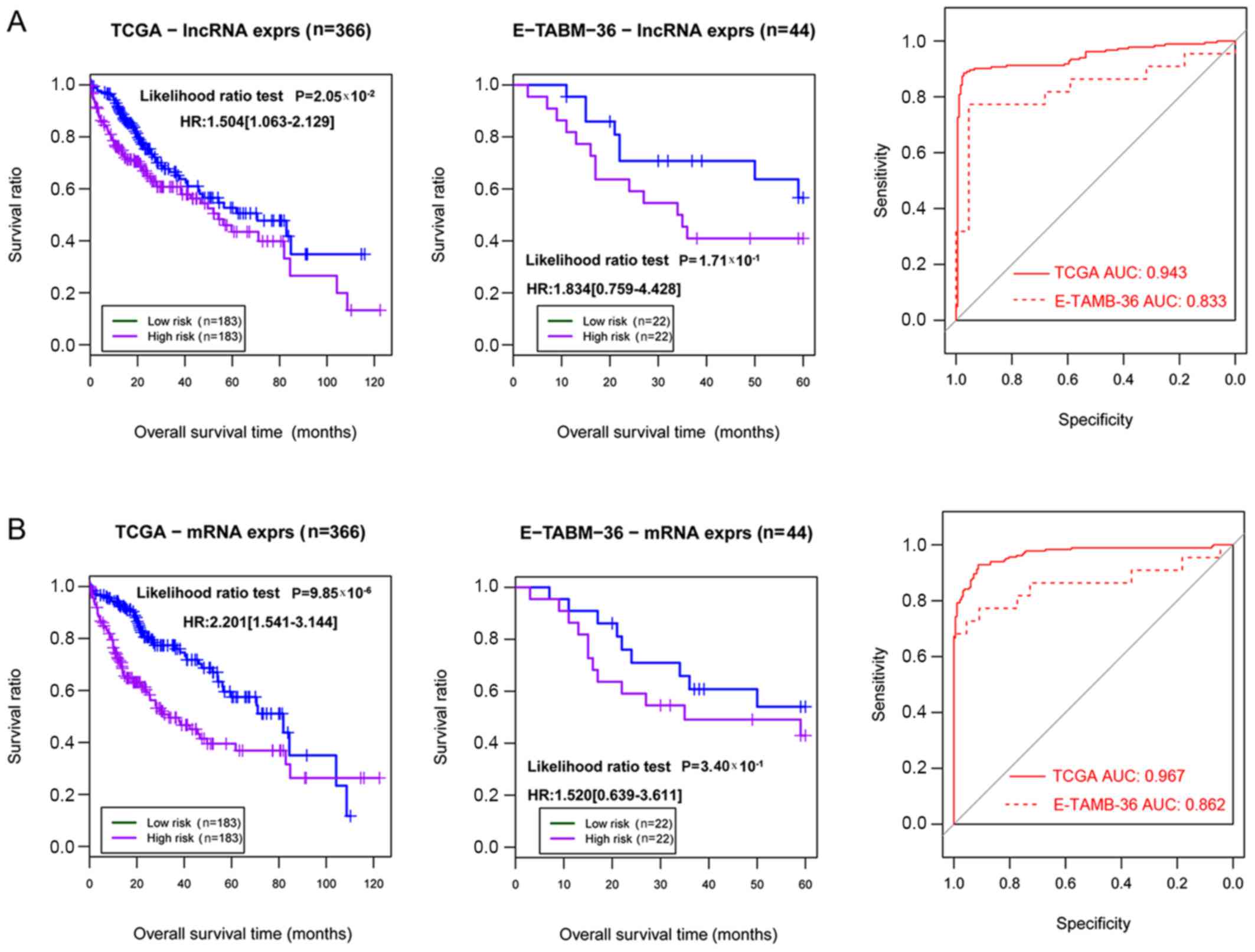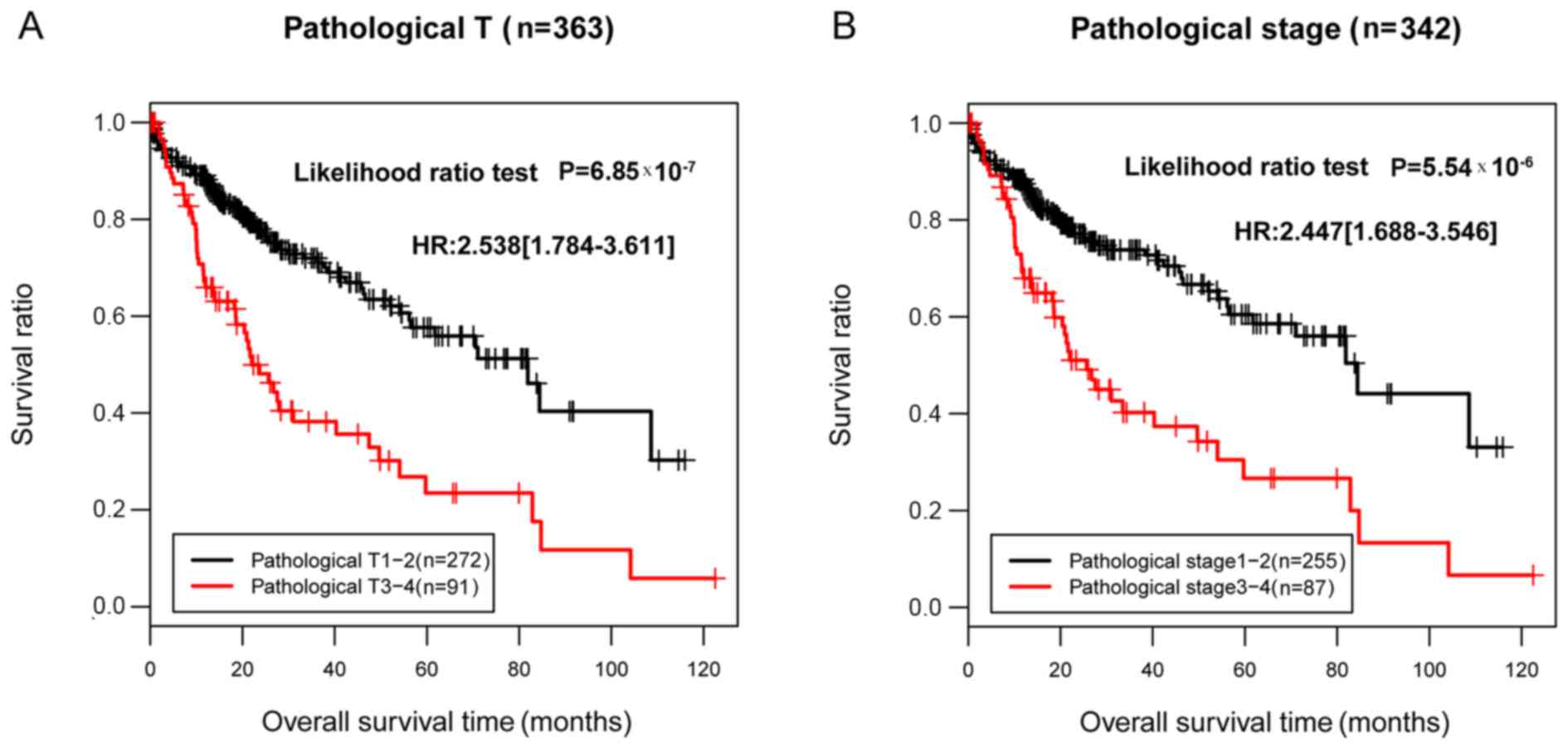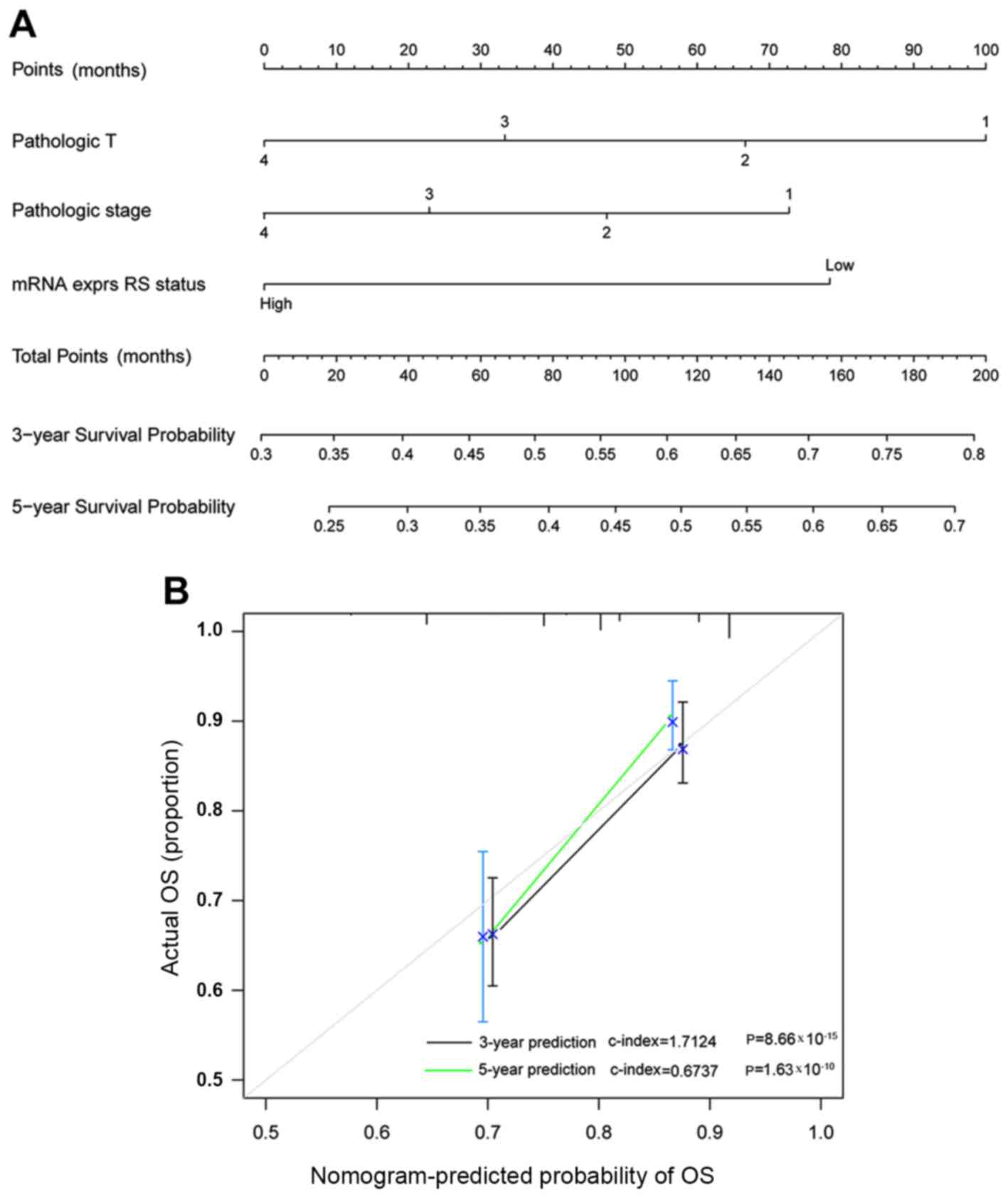|
1
|
Siegel RL, Miller KD and Jemal A: Cancer
statistics, 2017. CA Cancer J Clin. 67:7–30. 2017. View Article : Google Scholar : PubMed/NCBI
|
|
2
|
Mittal S and El-Serag HB: Epidemiology of
hepatocellular carcinoma: Consider the population. J Clin
Gastroenterol. 47 (Suppl):S2–S6. 2013. View Article : Google Scholar : PubMed/NCBI
|
|
3
|
Wallace MC, David P, Jeffrey GP and Adams
LA: The evolving epidemiology of hepatocellular carcinoma: A global
perspective. Expert Rev Gastroenterol Hepatol. 9:765–779. 2015.
View Article : Google Scholar : PubMed/NCBI
|
|
4
|
Yang Y, Chen L, Gu J, Zhang H, Yuan J,
Lian Q, Lv G, Wang S, Wu Y, Yang YT, et al: Recurrently deregulated
lncRNAs in hepatocellular carcinoma. Nat Commun. 8:144212017.
View Article : Google Scholar : PubMed/NCBI
|
|
5
|
Huo X, Han S, Wu G, Latchoumanin O, Zhou
G, Hebbard L, George J and Qiao L: Dysregulated long noncoding RNAs
(lncRNAs) in hepatocellular carcinoma: Implications for
tumorigenesis, disease progression, and liver cancer stem cells.
Mol Cancer. 16:1652017. View Article : Google Scholar : PubMed/NCBI
|
|
6
|
Gu JX, Zhang X, Miao RC, Xiang XH, Fu YN,
Zhang JY, Liu C and Qu K: Six-long non-coding RNA signature
predicts recurrence-free survival in hepatocellular carcinoma.
World J Gastroenterol. 25:220–232. 2019. View Article : Google Scholar : PubMed/NCBI
|
|
7
|
Wang Z, Wu Q, Feng S, Zhao Y and Tao C:
Identification of four prognostic LncRNAs for survival prediction
of patients with hepatocellular carcinoma. PeerJ. 5:e3742017.
View Article : Google Scholar
|
|
8
|
Yan J, Zhou C, Guo K, Li Q and Wang Z: A
novel seven-lncRNA signature for prognosis prediction in
hepatocellular carcinoma. J Cell Biochem. 120:213–223. 2019.
View Article : Google Scholar : PubMed/NCBI
|
|
9
|
Li B, Feng W, Luo O, Xu T, Cao Y, Wu H, Yu
D and Ding Y: Development and validation of a three-gene prognostic
signature for patients with hepatocellular carcinoma. Sci Rep.
7:55172017. View Article : Google Scholar : PubMed/NCBI
|
|
10
|
Shi YM, Li YY, Lin JY, Zheng L, Zhu YM and
Huang J: The discovery of a novel eight-mRNA-lncRNA signature
predicting survival of hepatocellular carcinoma patients. J Cell
Biochem. 2018.(Online ahead of print).
|
|
11
|
Tomczak K, Czerwińska P and Wiznerowicz M:
The cancer genome Atlas (TCGA): An immeasurable source of
knowledge. Contemp Oncol (Pozn). 19:A68–A77. 2015.PubMed/NCBI
|
|
12
|
Kim SM, Leem SH, Chu IS, Park YY, Kim SC,
Kim SB, Park ES, Lim JY, Heo J, Kim YJ, et al: Sixty-five
gene-based risk score classifier predicts overall survival in
hepatocellular carcinoma. Hepatology. 55:1443–1452. 2012.
View Article : Google Scholar : PubMed/NCBI
|
|
13
|
Chaudhary K, Poirion OB, Lu L and Garmire
LX: Deep learning based multi-omics integration robustly predicts
survival in liver cancer. Clin Cancer Res. 24:1248–1259. 2018.
View Article : Google Scholar : PubMed/NCBI
|
|
14
|
Li S, Chen X, Liu X, Yu Y, Pan H, Haak R,
Schmidt J, Ziebolz D and Schmalz G: Complex integrated analysis of
lncRNAs-miRNAs-mRNAs in oral squamous cell carcinoma. Oral Oncol.
73:1–9. 2017. View Article : Google Scholar : PubMed/NCBI
|
|
15
|
Liu JY, Yao J, Li XM, Song YC, Wang XQ, Li
YJ, Yan B and Jiang Q: Pathogenic role of lncRNA-MALAT1 in
endothelial cell dysfunction in diabetes mellitus. Cell Death Dis.
5:e15062014. View Article : Google Scholar : PubMed/NCBI
|
|
16
|
Wang P, Wang Y, Hang B, Zou X and Mao JH:
A novel gene expression-based prognostic scoring system to predict
survival in gastric cancer. Oncotarget. 7:55343–55351. 2016.
View Article : Google Scholar : PubMed/NCBI
|
|
17
|
Goeman JJ: L1 penalized estimation in the
Cox proportional hazards model. Biom J. 52:70–84. 2010.PubMed/NCBI
|
|
18
|
Anevski D: Functional central limit
theorems for the Nelson-Aalen and Kaplan-Meier estimators for
dependent stationary data. Statistics Probability Lett. 124:83–91.
2017. View Article : Google Scholar
|
|
19
|
Zhi S, Liu Y, Li Z and Zhang J: A weighted
likelihood ratio test-based chart for monitoring process mean and
variability. J Statistical Computation Simulation. 88:1–22.
2018.
|
|
20
|
Obuchowski NA and Bullen JA: Receiver
operating characteristic (ROC) curves: Review of methods with
applications in diagnostic medicine. Phy Med Biol. 63:07TR012018.
View Article : Google Scholar
|
|
21
|
Khaksar E, Askarishahi M, Hekmatimoghaddam
S and Vahedian-Ardakani H: Cox regression and parametric models
comparison of how they determine factors influencing survival of
patients with non-small cell lung carcinoma. Asian Pac J Cancer
Prev. 18:3389–3393. 2017.PubMed/NCBI
|
|
22
|
Eng KH, Emily S and Kayla M: On
representing the prognostic value of continuous gene expression
biomarkers with the restricted mean survival curve. Oncotarget.
6:36308–36318. 2015. View Article : Google Scholar : PubMed/NCBI
|
|
23
|
Wu J, Zhou L, Huang L, Gu J, Li S, Liu B,
Feng J and Zhou Y: Nomogram integrating gene expression signatures
with clinicopathological features to predict survival in operable
NSCLC: A pooled analysis of 2164 patients. J Exp Clin Cancer Res.
36:42017. View Article : Google Scholar : PubMed/NCBI
|
|
24
|
Huang G, Zhao G, Xia J, Wei Y, Chen F,
Chen J and Shi J: FGF2 and FAM201A affect the development of
osteonecrosis of the femoral head after femoral neck fracture.
Gene. 652:39–47. 2018. View Article : Google Scholar : PubMed/NCBI
|
|
25
|
Balogh J, Victor D III, Asham EH,
Burroughs SG, Boktour M, Saharia A, Li X, Ghobrial RM and Monsour
HP Jr: Hepatocellular carcinoma: A review. J Hepatocell Carcinoma.
3:41–53. 2016. View Article : Google Scholar : PubMed/NCBI
|
|
26
|
Telford EJ, Jiang WG and Martin TA:
HAVcR-1 involvement in cancer progression. Histol Histopathol.
32:121–128. 2017.PubMed/NCBI
|
|
27
|
Liu L, Song Z, Zhao Y, Li C, Wei H, Ma J
and Du Y: HAVCR1 expression might be a novel prognostic factor for
gastric cancer. PLoS One. 13:e02064232018. View Article : Google Scholar : PubMed/NCBI
|
|
28
|
Lee JK, Phillips JW, Smith BA, Park JW,
Stoyanova T, McCaffrey EF, Baertsch R, Sokolov A, Meyerowitz JG,
Mathis C, et al: N-myc drives neuroendocrine prostate cancer
initiated from human prostate epithelial cells. Cancer Cell.
29:536–547. 2016. View Article : Google Scholar : PubMed/NCBI
|
|
29
|
Rickman DS, Schulte JH and Eilers M: The
expanding world of N-MYC-driven tumors. Cancer Discov. 8:150–163.
2018. View Article : Google Scholar : PubMed/NCBI
|
|
30
|
Lin CP, Liu CR, Lee CN, Chan TS and Liu
HE: Targeting c-Myc as a novel approach for hepatocellular
carcinoma. World J Hepatol. 2:16–20. 2010. View Article : Google Scholar : PubMed/NCBI
|
|
31
|
Schlaeger C, Longerich T, Schiller C,
Bewerunge P, Mehrabi A, Toedt G, Kleeff J, Ehemann V, Eils R,
Lichter P and Bernhard PS: Etiology-dependent molecular mechanisms
in human hepatocarcinogenesis. Hepatology. 47:511–520. 2008.
View Article : Google Scholar : PubMed/NCBI
|
|
32
|
Qin XY, Suzuki H, Honda M, Okada H, Kaneko
S, Inoue I, Ebisui E, Hashimoto K, Carninci P, Kanki K, et al:
Prevention of hepatocellular carcinoma by targeting MYCN-positive
liver cancer stem cells with acyclic retinoid. Proc Natl Acad Sci
USA. 115:4969–4974. 2018. View Article : Google Scholar : PubMed/NCBI
|
|
33
|
Wu YJ, Jan YJ, Ko BS, Liang SM and Liou
JY: Involvement of 14-3-3 proteins in regulating tumor progression
of hepatocellular carcinoma. Cancers (Basel). 7:1022–1036. 2015.
View Article : Google Scholar : PubMed/NCBI
|
|
34
|
Zhang Y, Li Y, Lin C, Ding J, Liao G and
Tang B: Aberrant upregulation of 14-3-3σ and EZH2 expression serves
as an inferior prognostic biomarker for hepatocellular carcinoma.
PLoS One. 9:e1072512014. View Article : Google Scholar : PubMed/NCBI
|
|
35
|
Liu CC, Jan YJ, Ko BS, Wu YM, Liang SM,
Chen SC, Lee YM, Liu TA, Chang TC, Wang J, et al: 14-3-3σ induces
heat shock protein 70 expression in hepatocellular carcinoma. BMC
Cancer. 14:4252014. View Article : Google Scholar : PubMed/NCBI
|
|
36
|
Wang Y, Jiang T, Li Z, Lu L, Zhang R,
Zhang D, Wang X and Tan J: Analysis of differentially co-expressed
genes based on microarray data of hepatocellular carcinoma.
Neoplasma. 64:216–221. 2017. View Article : Google Scholar : PubMed/NCBI
|
|
37
|
Hainaut P, Amadou A and Gormally E: Cancer
prevention and control: Hepatocellular carcinoma.
Ecancermedicalscience. 13:9492019. View Article : Google Scholar : PubMed/NCBI
|
|
38
|
Yeh YT, Chang CW, Wei RJ and Wang SN:
Progesterone and related compounds in hepatocellular carcinoma:
Basic and clinical aspects. Biomed Res Int. 2013:2905752013.
View Article : Google Scholar : PubMed/NCBI
|
|
39
|
Ma WL, Hsu CL, Yeh CC, Wu MH, Huang CK,
Jeng LB, Hung YC, Lin TY, Yeh S and Chang C: Hepatic androgen
receptor suppresses hepatocellular carcinoma metastasis through
modulation of cell migration and anoikis. Hepatology. 56:176–185.
2012. View Article : Google Scholar : PubMed/NCBI
|
|
40
|
Keng VW, Largaespada DA and Augusto V: Why
men are at higher risk for hepatocellular carcinoma? J Hepatol.
57:453–454. 2012. View Article : Google Scholar : PubMed/NCBI
|
|
41
|
Chang WT, Hsieh BS, Cheng HL, Lee KT and
Chang KL: Progesterone augments epirubicin-induced apoptosis in
HA22T/VGH cells by increasing oxidative stress and upregulating
Fas/FasL. J Surg Res. 188:432–441. 2014. View Article : Google Scholar : PubMed/NCBI
|
|
42
|
Chang WT, Cheng HL, Hsieh BS, Chiu CC, Lee
KT and Chang KL: Progesterone increases apoptosis and inversely
decreases autophagy in human hepatoma HA22T/VGH cells treated with
epirubicin. ScientificWorldJournal. 2014:5671482014. View Article : Google Scholar : PubMed/NCBI
|















